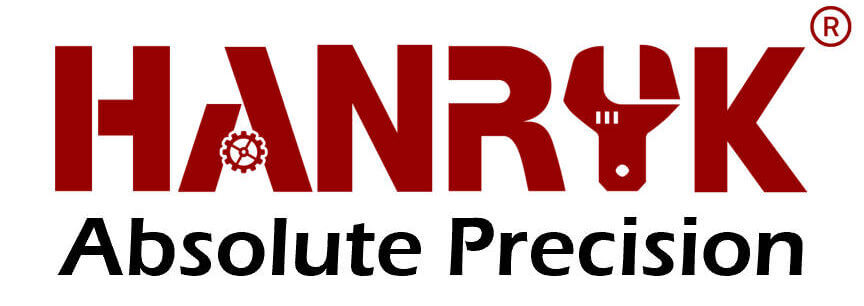Maximizing Efficiency and Cost Savings with Laser Cutting Technology
- by Hanryk® Team
- March 6, 2022
In today’s highly competitive manufacturing industry, companies are always looking for ways to improve efficiency and cost savings. One of the most effective technologies for achieving these goals is laser cutting. Laser cutting offers a number of advantages over traditional cutting methods, including higher precision, faster cutting speeds, and lower operating costs. In this article, we’ll explore some of the ways that companies can maximize efficiency and cost savings with laser cutting technology.

Advantages of Laser Cutting:
Laser cutting technology has become increasingly popular in recent years due to its numerous advantages. Some of the main benefits of laser cutting include:
- Higher Precision: Laser cutting machines can cut with much higher precision than traditional cutting methods. This allows for tighter tolerances and higher quality parts.
- Faster Cutting Speeds: Laser cutting is much faster than traditional cutting methods. This means that companies can produce more parts in less time, which can help increase efficiency and reduce lead times.
- Lower Operating Costs: Laser cutting machines require less maintenance and consume less energy than traditional cutting machines. This can help reduce operating costs and improve profitability.
- Versatility: Laser cutting can be used to cut a wide range of materials, including metals, plastics, and composites. This makes it a versatile technology that can be used in a variety of applications.
Maximizing Efficiency and Cost Savings with Laser Cutting:
While laser cutting technology offers numerous advantages, there are also ways that companies can further maximize efficiency and cost savings. Some of the key strategies include:
Material Selection: The materials being cut can have a significant impact on the efficiency and cost of laser cutting. Some materials may be more difficult to cut than others, which can result in slower cutting speeds and increased operating costs. By selecting materials that are easier to cut, companies can improve efficiency and reduce costs.
Table 1: Cutting Speeds for Different Materials
|
Material |
Density (g/cm³) |
Cutting Speed (m/min) |
|
Aluminum |
2.7 |
5 |
|
Stainless Steel |
7.9 |
3 |
|
Mild Steel |
7.85 |
2.5 |
|
Brass |
8.5 |
2.5 |
|
Copper |
8.96 |
2 |
As Table 1 shows, aluminum is the easiest material to cut, with cutting speeds of up to 5 m/min. Copper, on the other hand, is much more difficult to cut, with cutting speeds of only 2 m/min. By selecting materials that are easier to cut, companies can improve efficiency and reduce costs.
- Optimize Cutting Parameters: The cutting parameters used in laser cutting can also have a significant impact on efficiency and cost. By optimizing cutting parameters such as laser power, cutting speed, and focal length, companies can improve cutting efficiency and reduce costs
Table 2: Cutting Parameters and their Effects
|
Cutting Parameter |
Effect on Cutting Efficiency |
|
Laser Power |
High power = faster cutting |
|
Cutting Speed |
High speed = faster cutting |
|
Focal Length |
Short focal length = more precise cutting |
As Table 2 shows, increasing the laser power and cutting speed can help improve cutting efficiency. Shortening the focal length, on the other hand, can improve cutting precision. By optimizing cutting parameters, companies can improve efficiency and reduce costs.
- Minimize Material Waste: Another way that companies can improve efficiency and reduce costs with laser cutting is by minimizing material waste. This can be achieved by using nesting software to optimize part placement and reduce material waste. By maximizing the number of parts that can be cut from a single sheet of material, companies can reduce material waste and improve efficiency.
Table 3: Material Utilization and Cost Savings with Optimized Nesting
|
Material Utilization (%) |
Material Cost Saving (%) |
|
Optimized Nesting |
90 |
|
Standard Nesting |
70 |
|
Difference |
20 |
As Table 3 shows, optimized nesting can improve material utilization by up to 20% compared to standard nesting. This can result in material cost savings of up to 5%.
- Maintain Equipment: Proper maintenance of laser cutting equipment is essential for ensuring maximum efficiency and cost savings. Regular maintenance can help prevent breakdowns, reduce downtime, and extend the lifespan of the equipment. It’s important to follow the manufacturer’s recommended maintenance schedule and to perform regular checks and inspections of the equipment.
- Improve Workflow: Improving workflow can also help improve efficiency and reduce costs. This can be achieved by optimizing the manufacturing process, reducing lead times, and improving communication and collaboration between different departments. By streamlining the workflow, companies can reduce waste and improve efficiency.
Laser cutting technology offers numerous advantages for manufacturing companies, including higher precision, faster cutting speeds, and lower operating costs. By optimizing material selection, cutting parameters, material utilization, equipment maintenance, and workflow, companies can further maximize efficiency and cost savings. By implementing these strategies, companies can improve profitability and gain a competitive edge in the manufacturing industry.

